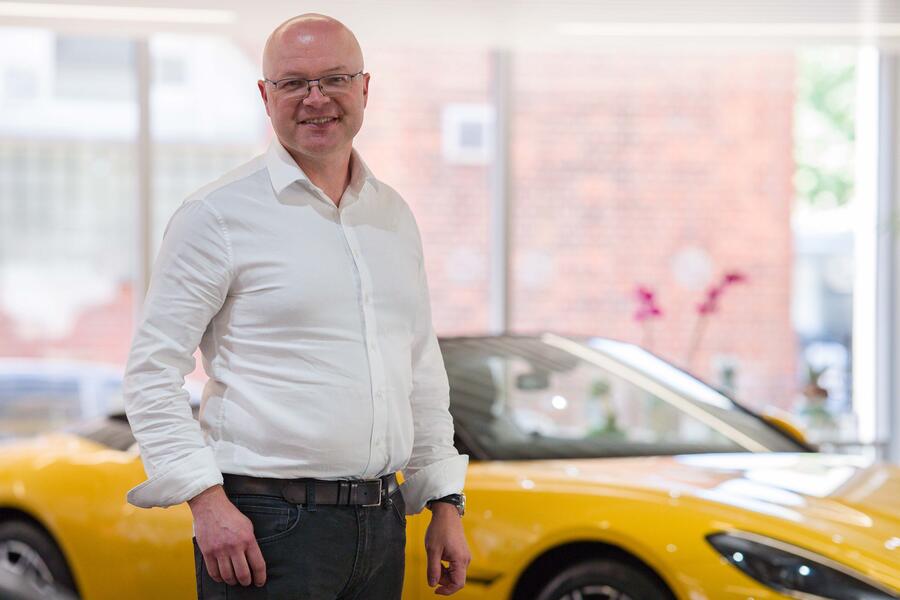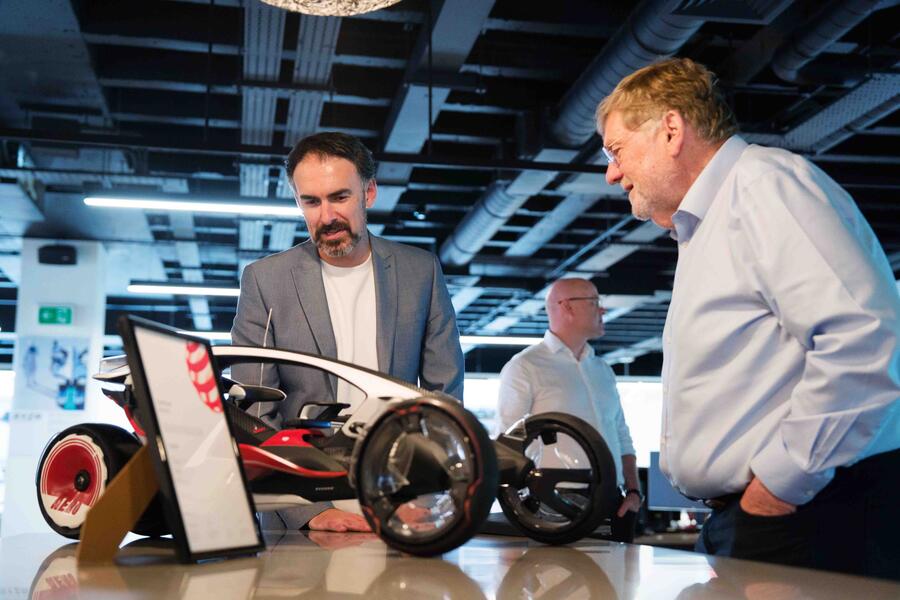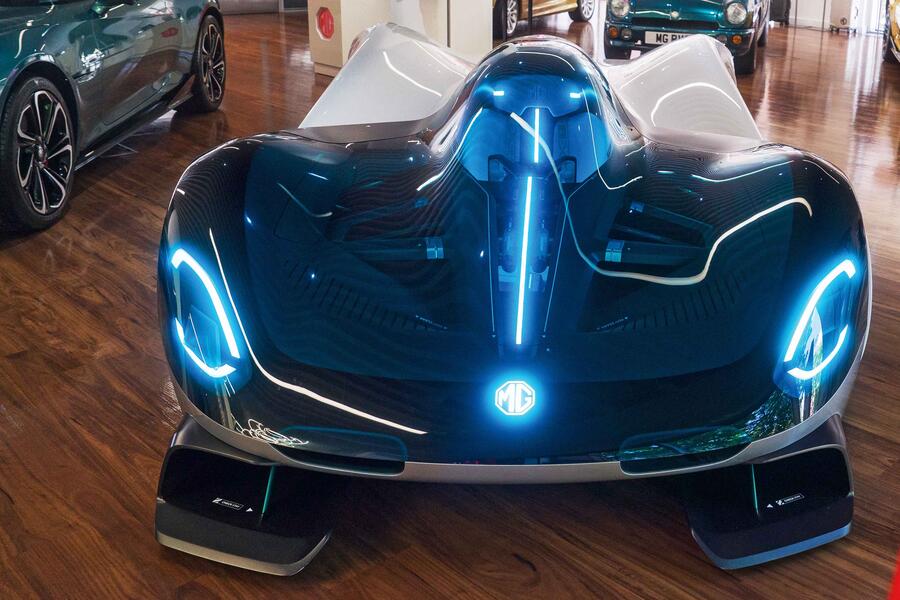Recent Updates
11/10/2025 12:00 PM
Toyota Hilux Electric
11/10/2025 12:00 PM
MG's rise, fall, and rise again: inside the brand's rebirth
11/10/2025 12:00 PM
The EV that lost just eight miles of range after 107,000 miles
11/10/2025 12:00 PM
Next Renault Megane and Scenic tipped to go hybrid
11/09/2025 12:00 PM
Glastonbury glamping has nothing on my Duster
11/09/2025 12:00 PM
The wormholes of being a petrolhead
11/08/2025 12:00 PM
Bonus pod: Autocar meets Skoda CEO Klaus Zellmer
11/08/2025 12:00 PM
20th-century trailblazers: the best cars from 1901 to 1925
11/08/2025 12:00 PM
The great debate: the best car of the past 25 years
11/08/2025 12:00 PM
Kamm’s idea of a Porsche restomod is rather different from most
EV, Hybrid, Hydrogen, Solar & more 21st century mobility!
 Over the past five years, MG has enjoyed unprecedented UK sales growth in an ailing market. Here’s how they did it
Over the past five years, MG has enjoyed unprecedented UK sales growth in an ailing market. Here’s how they did it
Once upon a time, back in the annals of history, there may have been an explosion of UK automotive sales greater than that of MG's recent, towering success in this country a 620% leap from 13,000 to 81,000 cars in the four short years between 2019 and 2023.
If so, no one can remember it, and experts reckon MG is safe to claim a most remarkable record.
However, even if there had been a rival high achiever, it's vanishingly unlikely that the pretender would have achieved its feat as MG did while the supporting market around it collapsed in one disastrous year from 2.3 million cars to 1.6 million, as happened in Britain during the first Covid year.
MG's prodigious rise against the most powerful of trends will always loom large in the annals of automotive success.
This is just one of the reasons why Autocar decided to choose MG as its Manufacturer of the Year for 2025, the others being the fact that a large measure of the company's success is due to the work of a British-led design team, centred in a compact studio atop MG Motor UK's imposing headquarters not far from Madame Tussauds in Marylebone, London.
It is run by design director Carl Gotham, whose team count the super-successful 4 EV and the more recent Cyberster sports car among a number of successes, many of which they can't tell us about.
How on earth did all this happen? When MG left British ownership in 2005, it bumped along for years, sometimes making 5000 cars a year but never coming to notice.
Then the wind changed. MG's UK commercial director Guy Pigounakis and the company's head of product and planning, David Allison, both highly experienced industry executives, were drafted in by European chief William Wang to join a tight-knit group of like-minded experts to take MG on what would soon turn into a wild ride.
Pigounakis, Allison and their tiny team of management personnel are rightly proud of their achievement, but they attribute it to an extraordinary range of factors while modestly failing to cite their own inspiration.

Both men were already highly experienced in the retail car business before coming to MG, and both had played important roles in the rise of Hyundai, a previous 'shooter'. They, like many bosses of British dealer groups at the time, were curious about the prospects of the Chinese cars that had begun arriving here in numbers.
However, Pigounakis, who had also been commercial director of 'old' MG, before its sale, had already helped to demonstrate the marque's potential by persuading the south-coast dealer group for which he was working to open a 'new MG' dealership on spec and then he helped add another three to the business when sales took off.

"William Wang came to see us on the south coast," says Pigounakis, "and we all started talking about then working on MG's future. We took a deliberate decision to link it with other franchises some Ford, some Vauxhall, some Stellantis brands. Between me, David and several colleagues, we reckoned we knew every dealer group boss in the UK, independent or public. We found there was a level of awareness of and affection for MG that we could build on."
MG began its phase of rocket-propelled progress, aided by the recent arrival of its first pure EV, the ZS. The sheer value seen in MG's pricing the cars typically cost 75% of rival models that offered less standard equipment and a warranty much shorter than MG's generous seven years propelled sales.
Clever positioning of dealerships that recognised customers' reluctance to travel helped a lot. Then the British-styled 4, a pure and practical EV, arrived at £25,990 to put MG back on the map and 'sell' British buyers on affordable electric power.
Were MG's men surprised by the reception? "Not entirely," says Allison. "We had the name, the dealers, the equipment and the warranty. And our technology left a lot of rivals playing catch-up. There was another effect we noticed: the electric car market was more brand-agnostic than the old one. Traditional manufacturers didn't have the hold on customers they had been used to."

Under the guidance of strategy guru Allison, MG has prospered by specialising in just four sectors: B-segment supermini, B-segment SUV, C-segment hatchback and C-segment SUV that account for around 80% of sales in the UK.
The expansion levelled off at around 84,000 sales last year (nearly matching longer-established Hyundai), partly because the rival count has increased and because 'legacy' brands such as Vauxhall have learned how to sell cars at lower prices, having said for years it wasn't possible.
What of the future? Pigounakis reckons it's time to go back on the offensive, although not to push again for explosive expansion.
The current business size is close to ideal for volume-versus-profitability calculations, as well as for making a decent job of dealing with existing customers and keeping dealers happy. "Besides, if we had kept on expanding the way we did," he jokes, "we would pretty soon have been the only people selling cars in Britain,
Before the year's end, we will see a revised 4, improved in function and materials quality along the lines of the recent, excellent S5 EV. And there will be another SUV, a size bigger than the S5. Even more new metal is due in 2026, but the UK takes only a fraction of the company's global model line-up, so the Brit managers feel they have time to decide what comes next.
MG design: Shouting from the rooftop

MG's British design studio is the only one I've ever visited that sits on the roof of an office building. It occupies the entire top floor of the company's Marylebone headquarters, within sound and view of London's buzzing traffic but insulated from both by its own calm, creative atmosphere.
Car companies have always liked to put designers where they can be influenced by the ebb and flow of modern humanity, and this seems the ultimate expression of it.
The studio and its shifting population of 30-odd occupants moved to London in 2019. Before that they were in Birmingham, in less salubrious conditions. Design director Carl Gotham remembers those days well. He joined MG in 2005, just before Nanjing merged with SAIC to form the current ownership structure, which over the years has done much to build MG's modern era of success.

When Gotham joined, the major task was to create the first MG 3 supermini, a car that ploughed a long furrow in the market, having been launched in 2011, progressed through two facelifts (2013 and 2018) and then ending production in 2024 when supplanted by an all-new replacement. But MG Design's most productive period began when it moved to Marylebone in 2019 and produced eye-catching models such as the 4 EV family hatchback and the Cyberster sports car, plus various supporting models, all with Gotham as director of advanced design.
Gotham talks mostly in interviews about the MG brand, because that's what we see in this country, but he and his team are also instrumental in creating cars for SAIC marques that don't come here, along with other MG models that the UK strategists prefer not to take.
The car that really brought MG to notice was the British-styled 4. The model is now approaching its first facelift and is viewed widely by pundits as the embodiment of the practical, affordable, electric family car. "Work began on that in 2019," recalls Gotham. "It was a big advantage to have a dedicated EV platform. The brief was to create a car predominantly for Europe, and that has proved to be a great move: we sold 45,000 units in the UK in less than three years."
Gotham says one of the greatest things about working at MG Design is his team's relative freedom to operate. The studio does its share of supporting work for projects that are led in China, but it takes the lead itself on many new projects, usually taking them to 'single theme selection' the point where a car's overall look has been decided. Then China takes over, producing full-size models (they aren't feasible in Marylebone) and the supporting engineering.

The UK-designed Cyberster sports car broke many rules. Almost as soon as Gotham took over as MG's design director (now advanced design director, in honour of the UK's emerging position at the sharp end of things), he promised his team they would do an MG sports car "with whatever we can find". The lingering question — who would buy a modern MG sports car and what would it be like? definitely needed answering.
The Cyberster had a very long gestation, because it was run like a proper old-school 'skunkworks' project: people had other work to do. It wasn't on any cycle plan and there were lots of unprecedented problems, such as the engineering of the scissor doors. But it was important to get the management on side, because such projects were unknown in China. When his boss came over to visit from China, Gotham hired a Mazda MX-5 and took him to lunch.

The Cyberster concept was unveiled on SAIC's Beijing motor show stand without its creators present, because of lockdown. Not being there to sell the idea must have been frustrating, but SAIC's chairman still liked it so much that he commissioned it for production on the spot, lobbing his Chinese engineers a problem because he wanted it, scissor doors and all.
Gotham and his team feel the Cyberster's success, plus the recent arrival of a new vice-president of design, Shanghai-based Jozef Kaban (ex of the Volkswagen Group and renowned for Bugatti's Veyron), bode well for Marylebone's future.
"Our successful projects have helped build an atmosphere of trust," Gotham says. "It feels like this is the start of the next chapter."
